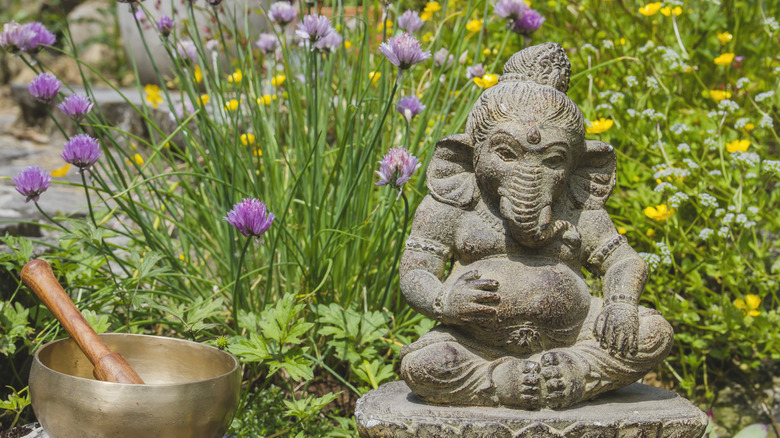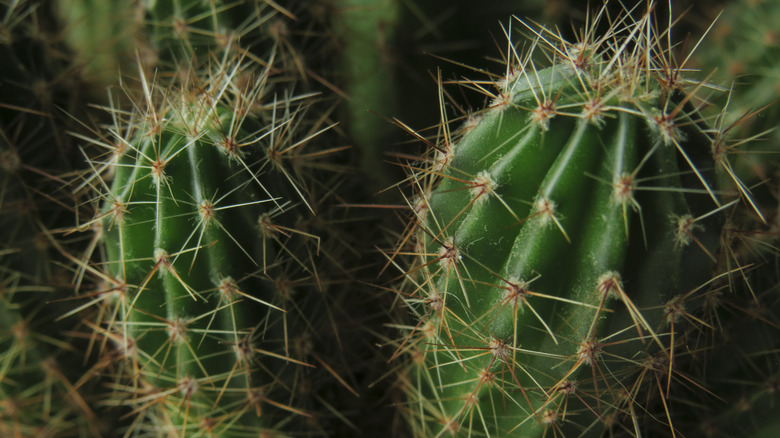How To Use Vastu Shastra In The Garden
Vastu shastra, the ancient architectural science of the Indian Vedas, provides a set of rules regarding the spatial relations of human-built structures and the natural world. Though similar in some aspects, vastu shastra is different than feng shui. It is a much older practice, often considered the predecessor to the Chinese art form, and should not be mistaken as one and the same, for the science goes deeper than the art. In the design phase for a new building, architects working with vastu shastra will consider everything from the direction and speed of the wind to the heat emanating from the sun and the effects of gravity and magnetic fields.
These principles are not confined to the space within the walls of a home. They can be applied to your outdoor areas as well, and there are specific guidelines when it comes to gardening. For one, vastu shastra regards a list of fruit trees and delightfully scented flowers and herbs to be particularly auspicious; these include lemon, pomegranate, pineapple, mango, jasmine, frangipani (plumeria), and basil. Just imagine how delicious and sweet-smelling your garden would be with all of these set to bloom! But that's only the beginning. There are many ways to use this spatial science to design the perfect garden.
Adhere to directionals and proper placement
North, east, west, south; each direction holds meaning within the science of vastu shastra. Along with those come the five elements known as paanchbhootas, explains Dr. Smita Jain Narang of the Pankh Vastu Centre. These are earth (southwest), water (northeast), fire (southeast), air (northwest), and space (the center). When planning the layout of a garden, start by keeping the center open and clear.
The northern and northeastern sections are where you want to place a water feature, like a pond or fountain. In the case of a small waterfall, situate it so that the water flows in the direction of your home as a way to usher in wealth. These sections are also the best places for a holy basil (tulsi) plant or some lotus flowers in the pond for added prosperity. Moving to the east you'll find the best location for those fruit trees and potted flowers. From there, head south for anything that could be considered heavy, such as a rock garden or big trees. Continue around the axis to the southwest, and you're in a perfect spot to dedicate to fragrant jasmine and roses. Finally, the western section is ideal for large trees (mangoes, anyone?) and statues to pay homage to Ganesh, Lakshmi, and the Buddha.
Support any creepers or climbing vines, install a swing with a north-south axis, and before you know it, you'll have created a harmonious and auspicious atmosphere.
What not to do in the garden
The principles of vastu shastra advise against plants with spikes and thorns, so the prickly pear cactus patch you've been thinking of planting will not be your best bet. Sure, it may convince unwanted guests from stepping foot in your garden, but the thorns are believed to interrupt the flow of healthy relationships and instead encourage tension between individuals. Bonsai trees are equally shunned because they represent the epitome of stunted growth, an energy no avid vegetable gardener would want anywhere near their coveted tomatoes.
Make sure you're not leaving decaying or dead plant debris around, but of course, this is usually advisable for healthy gardens. Particular to vastu shastra are the rules that there should not be any plants more than 3 feet tall, and large trees should not be situated in the center of the garden. Furthermore, one helpful tip is to refrain from planting trees in the northeast corner, where they would eventually grow tall enough to inhibit morning sunlight from reaching plants below their canopies. Finally, when choosing trees for your garden, do not opt for banyans or figs as these are considered sacred and, therefore, only fit for temples.


